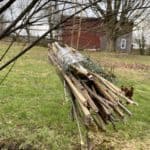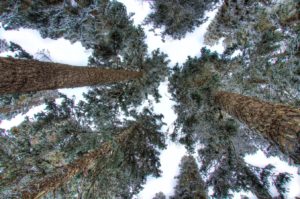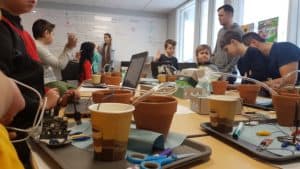Section Navigation
Activity
We are going to use recycled materials and natural materials found outside to help worker bees rest during their long commutes by creating bee hotels. Bee hotels can provide a safe spot for bees to take a break from flight, catch a quick snooze or meet up with friends along their journey to pollinate our flowers, fruits & vegetables! Not all bees pollinate flowers close to the beehive, therefore they can use these hotels as temporary homes. We can hang these bee hotels outside in a tree in our front or backyards!
Background Information
Honeybees are important because they help our plants grow! Honeybees pollinate our fruits, vegetables and flowers. Did you know there are three types of honeybees? There are queen bees, worker bees & drone bees. Worker bees are the ones that do most of the pollinating. These bees help produce food for humans through pollination.
The transfer of pollen from one flower or plant to another is called pollination. Flowers and plants depend on pollination because without it they cannot grow and produce another flower or plant.
Honeybees are disappearing in some areas at a fast rate due to something called Colony Collapse Disorder (CCD). This disorder causes worker bees (the ones who pollinate our flowers, vegetables & fruit) to all disappear from a hive. Colony collapse disorder is well known in the bee community because it kills off large numbers of honeybees. Many factors contribute to Colony collapse disorder such as viruses, mites, parasites and pesticides. Winter can also contribute to bee colonies dying but is not a contributor of CDD. In Canada our winters can be very cold. In Canada, on average about one in four bees die during the winter (Resource: CAPA Statement on Colony Losses).
Our goal for today is to help those worker bees find a safe spot to rest during their busy days. Bee hotels can provide a safe spot for bees to take a break from flight, catch a quick snooze or meet up with friends along their journey to pollinate our flowers, fruits & vegetables!
Fun Fact – Honey bees fly at a speed of around 25km per hour and beat their wings 200 times per second! (Resource: 10 facts about Honey bees!).
Materials
The following is a list of materials needed to complete this activity:
- Tree bark, pine cones, hollow reeds, bamboo stems or other natural materials that have fallen off trees/plants
- Small sticks & twigs
- Recycled newspaper
- Twine or string
- Large recycled plastic container (i.e. 2L pop bottle or yogurt tub)
- Scissors
- Tape
Step by Step Instructions
STEP 1: Collect your materials including: sticks, twigs, pine cones, tree bark, hollow reeds, bamboo stems (or any other materials that you find outside), large plastic container, twine or string, scissors, tape and newspaper.
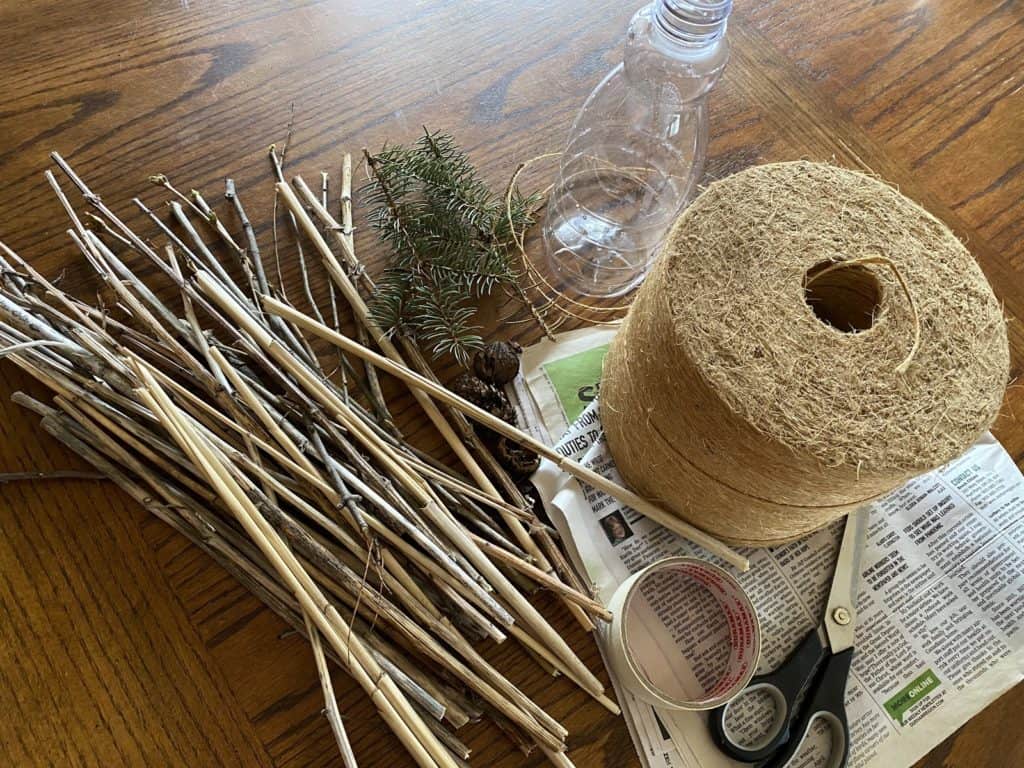
STEP 2: Using your scissors, cut your recycled plastic container to form a tube that will allow you to put your collected materials in both ends!
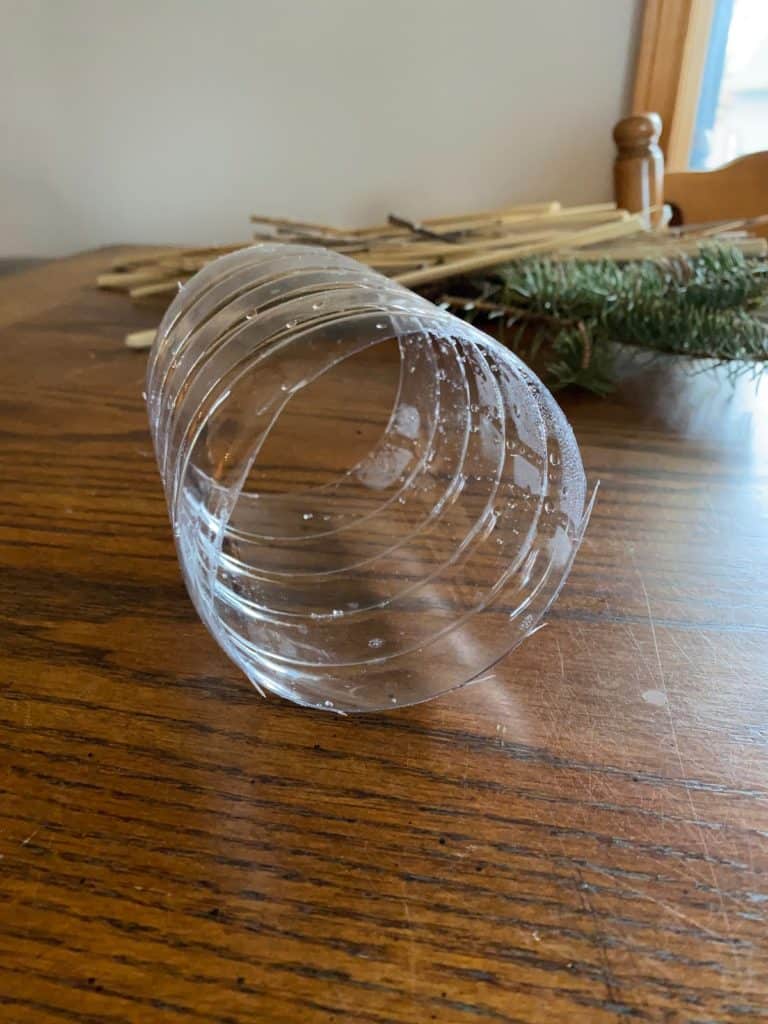
STEP 3: Using your newspaper, roll a single sheet at a time to form a tight tube. Tape the tube so that it keeps its shape! Cut the tubes into smaller pieces that are about the same length as your sticks and twigs.
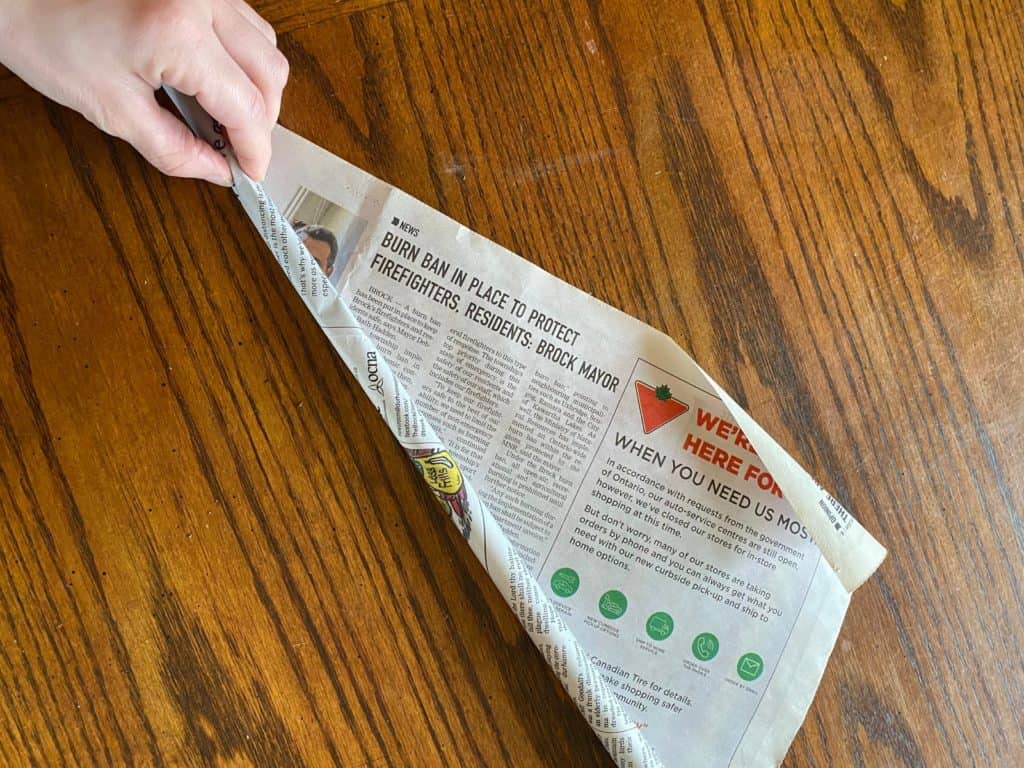
STEP 4: Using your twine or string, cut a piece to wrap around your sticks, twigs, newspaper rolls and other natural materials. Wrap it tight & don’t forget to tie a knot to keep it together.
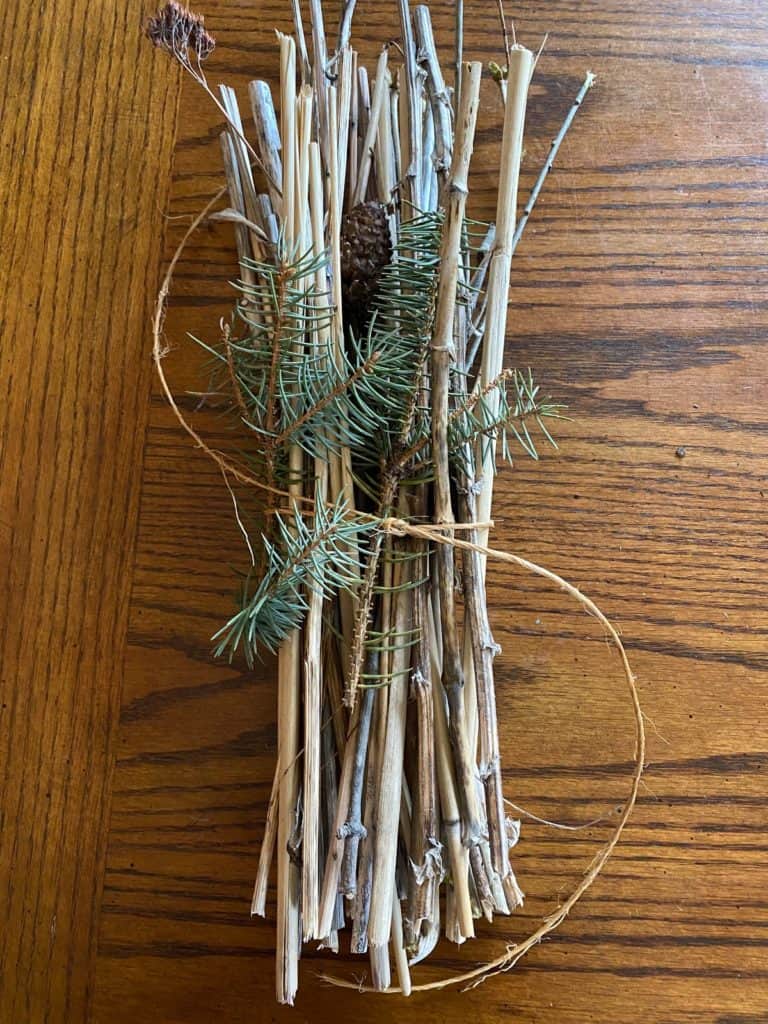
STEP 5: Place the tied up sticks, twigs, newspaper rolls and other materials inside the plastic tube! If it is not a tight squeeze, try adding more materials inside the plastic tube.
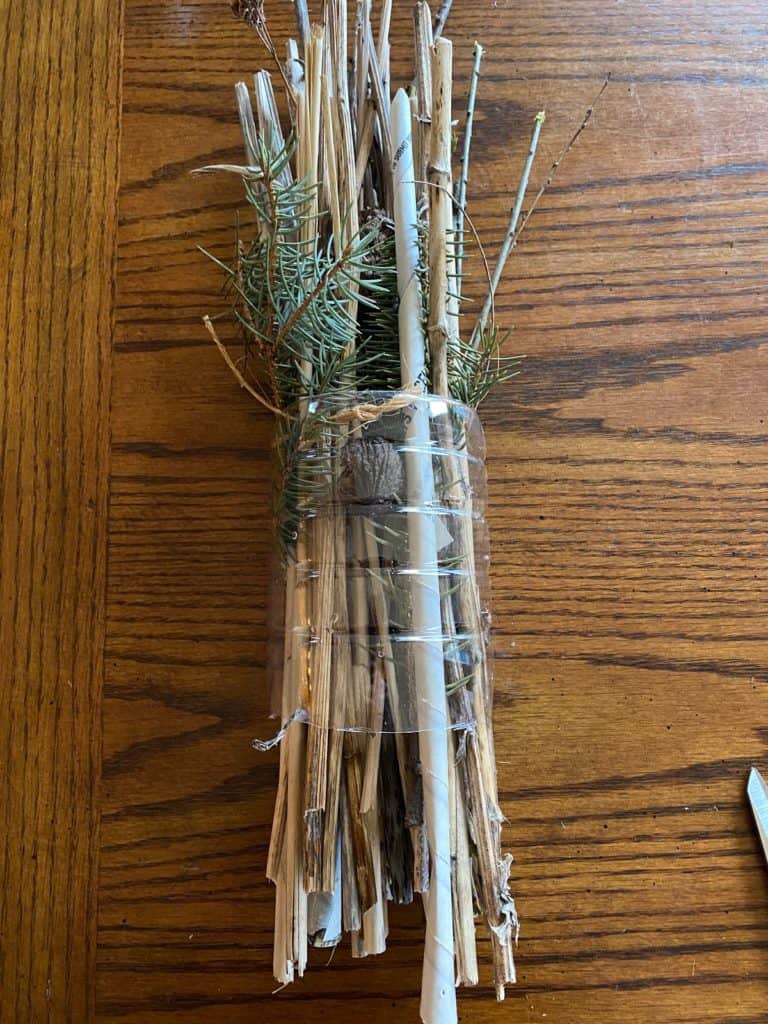
STEP 6: Using twine or string, hang your bee hotel in a tree and watch the bees enjoy their well deserved rest!
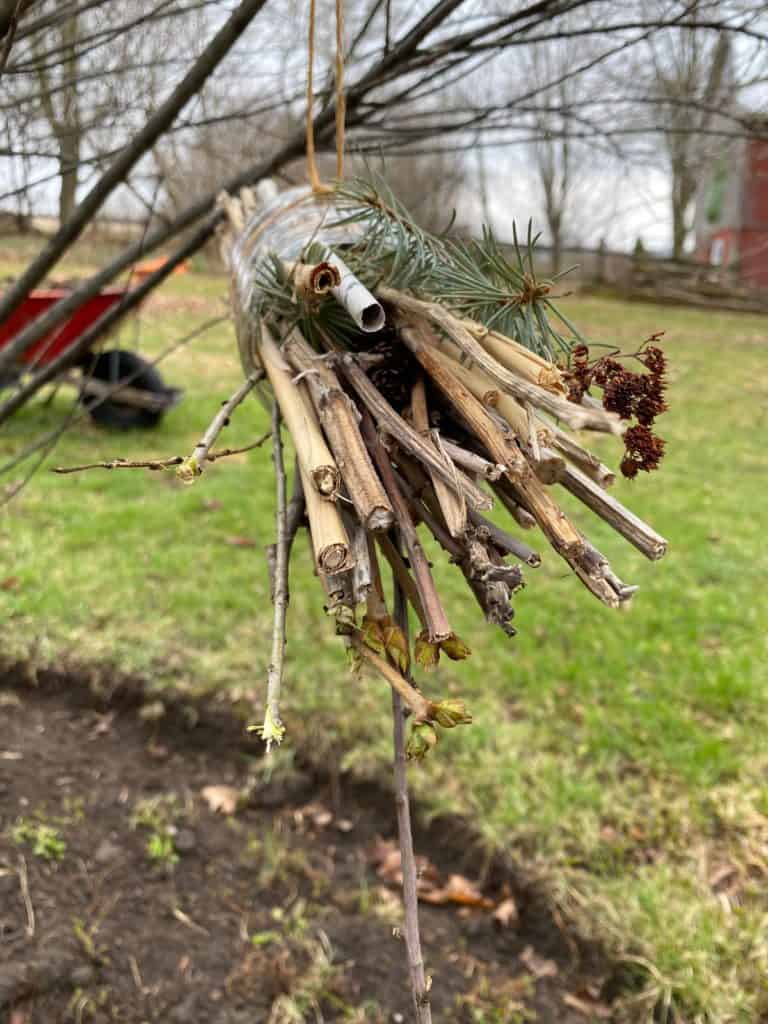
Download Activity
Follow Up
Watch Storyline Online: Please Please the Bees written by Rashida Jones. See how the main character Benedict plans to also help the Honeybees!
Share Your Work With Us! We want to see the awesome things you’re all creating with Pinnguaq. Share online with us and tag @pinnguaq on Facebook, Twitter or Instagram for your work to be featured. Don’t forget to include the hashtag #LearnWithPinnguaq! Keep tuning into Pinnguaq for more lesson and fun activities!
